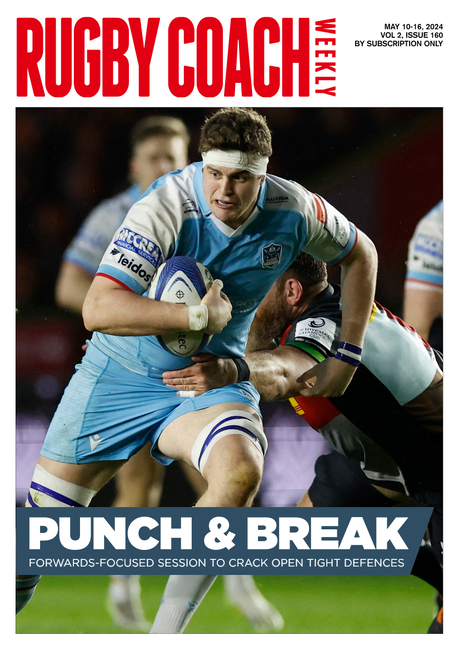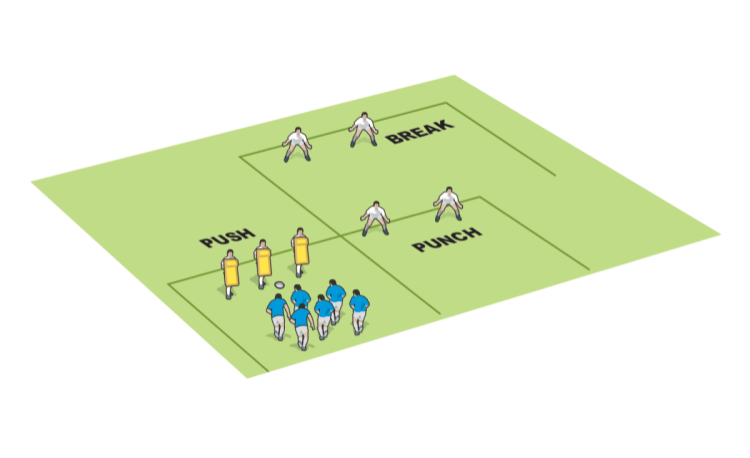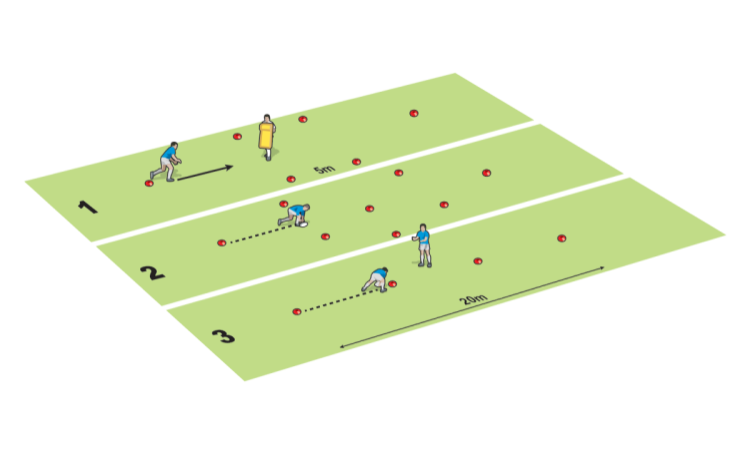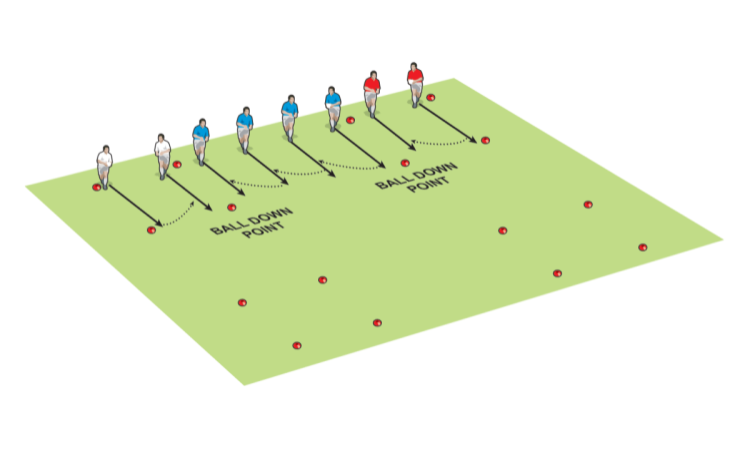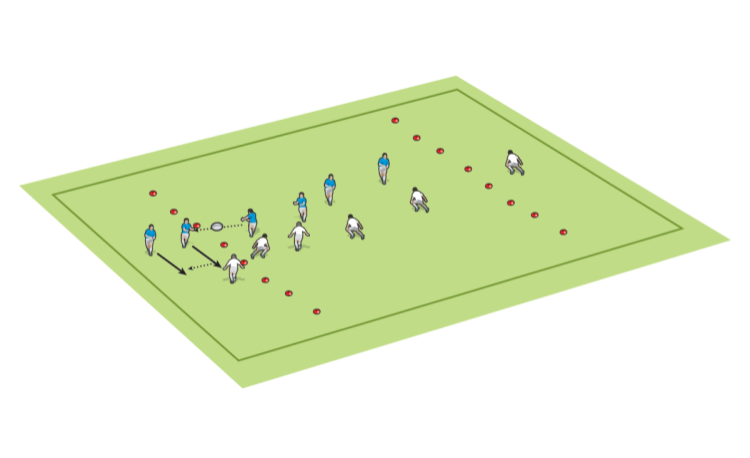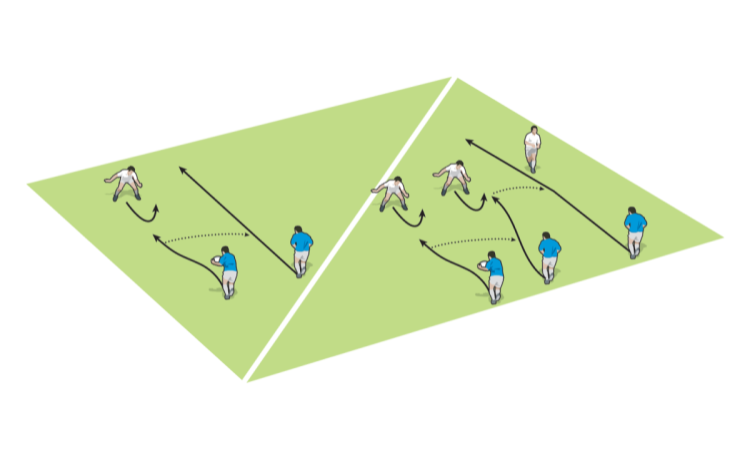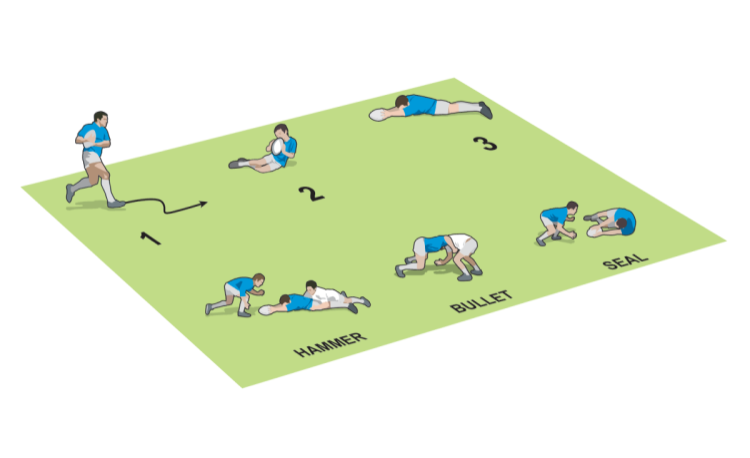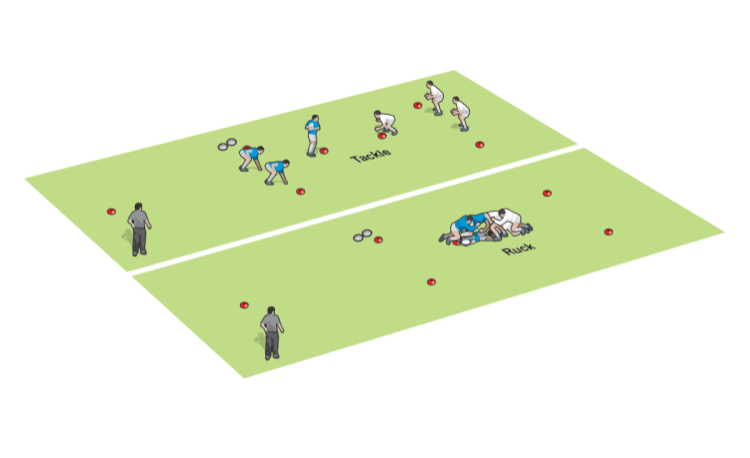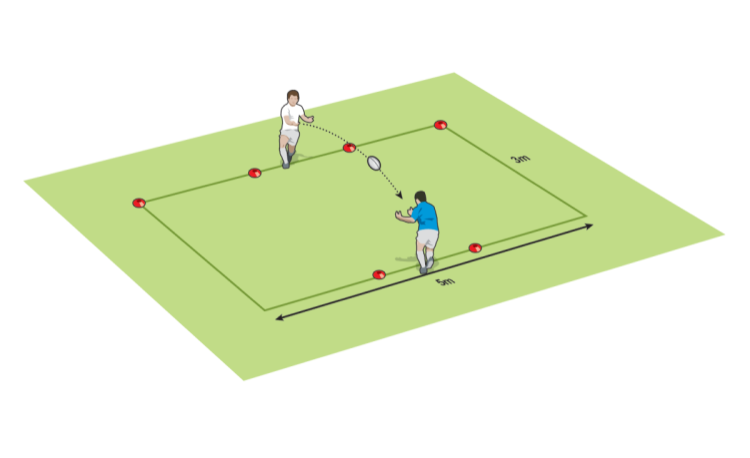You are viewing
1 of your 2 free articles
Pick up and play - ideal for younger players
Passing and Handlingby Dan Cottrell
The ball is often fumbled or passed poorly as players get used to handling. That means more ball on the ground. Help your players recover the ball and play away.
A moving rugby ball isn’t an easy thing to pick up. And once gathered, the new ball carrier has to make decisions on what to do next. Use this session to work on techniques and options.



A moving rugby ball isn’t an easy thing to pick up. And once gathered, the new ball carrier has to make decisions on what to do next. Use this session to work on techniques and options.

- Roll a ball into a small box.
- A player (the picker) comes forward to pick it up.

- He then runs forward again and out of the box to pass to another running player who was waiting in front of that new box.
- The idea is that the picker has to run forward as soon as he gets the ball, and the other player has to time his run based on the pick up.

- Develop by adding a tackler at the end of the first box.
- Now the support player is behind the picker. The picker has to beat the tackler and offload the ball if he can’t.
- Develop further by working in a larger box and playing 2 v 2 where one player from each team comes forward when you roll the ball into the box (and towards one of the players).
- As soon as the ball is touched, the other two players enter the game.
TECHNIQUE
- Swoop to gather the ball.
- Get one foot to the side of the ball.
- Pick up and accelerate away.
Newsletter Sign Up
Coaches Testimonials

Gerald Kearney, Downtown Las Vegas Soccer Club

Paul Butler, Florida, USA

Rick Shields, Springboro, USA

Tony Green, Pierrefonds Titans, Quebec, Canada
Subscribe Today
Be a more effective, more successful rugby coach
In a recent survey 89% of subscribers said Rugby Coach Weekly makes them more confident, 91% said Rugby Coach Weekly makes them a more effective coach and 93% said Rugby Coach Weekly makes them more inspired.
Get Weekly Inspiration
All the latest techniques and approaches
Rugby Coach Weekly offers proven and easy to use rugby drills, coaching sessions, practice plans, small-sided games, warm-ups, training tips and advice.
We've been at the cutting edge of rugby coaching since we launched in 2005, creating resources for the grassroots youth coach, following best practice from around the world and insights from the professional game.
More from us
© 2023 Rugby Coach Weekly
Part of Green Star Media Ltd. Company number: 3008779
We use cookies so we can provide you with the best online experience. By continuing to browse this site you are agreeing to our use of cookies. Click on the banner to find out more.


